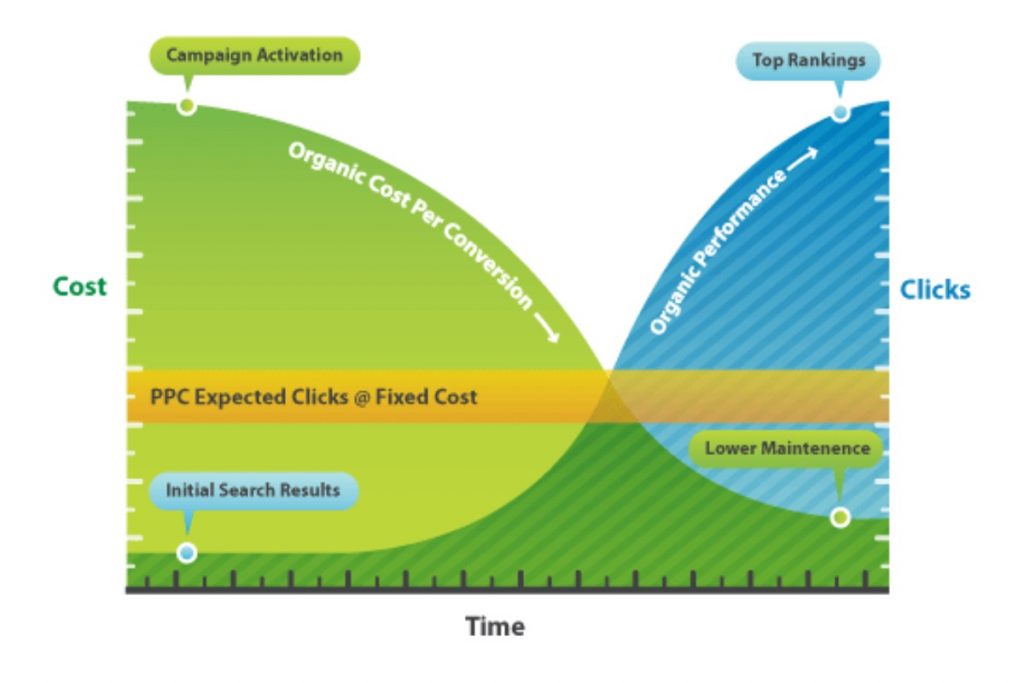| Nov 16, 2013
Investing in Higher Education Marketing: PPC vs. SEO

Search is one of the most frequently used online tools among US adults. A 2012 Pew Internet Survey found that 91% of adults use search engines to find information on the Web. This survey also revealed that younger and more educated people, meaning current or prospective college students, are most likely to use search engines. So for these young people, when they make one of the biggest decisions of their life — where to go to college — search is one of the top few resources they use to narrow down their choice. This was confirmed by another Noel Levitz survey of 2,000 college bound students which found that search engines are the second most used resource by prospective students for researching colleges. The popularity of search engines in this user group has led to a huge increase in search engine marketing – both PPC and SEO – in the higher education marketing space.
An interesting story recently aired on NPR’s Marketplace, shows the confusion users face in distinguishing between paid advertising and organic results on a search engine results page. From many searchers’ perspectives, there’s no difference between these two mediums. But from a marketer’s perspective, they’re two very different tools, even when aiming for a single objective.
We’ve worked with many higher education clients who struggle with finding a balance between investing in PPC and SEO. The overarching goal of all marketing activities is to drive enrollments. Both PPC and SEO serve different purposes in contributing to this goal for a college or university.
Why PPC?
Pay per click advertising is a medium for the short term. If a college or university is faced with a tight deadline for enrollments, for example, paid advertising often works very well. Be it driving enrollments for a program or getting people to sign up for an event or info session — PPC is a smart channel to use.
The main advantage to paid advertising is that it’s very tightly tied to your investment. As long as you’re bidding high enough, your ads will appear in the top spots which are most visible to searchers. Searchers clicking on the ads can be driven to landing pages where prominent call-to-actions make it easy for them to find contact information and take the next steps.
PPC efforts will drive enrollments to the middle of the enrollment funnel. From there, it’s the responsibility of the college’s admissions team to coax the prospect towards becoming an enrolled student.
Why SEO?
SEO, on the other hand, is not as straightforward. But it is just as important for a higher education institution – sometimes even more so. When you think of SEO, think in terms of reputation and brand building. Building brand reputation takes time. It works by developing and building trust with prospects, which is what SEO does. If your website consistently shows up for relevant keywords and provides relevant, valuable content, prospects will have more trust in the legitimacy of your brand.
The purpose and time frame for SEO are completely different than that of a PPC campaign. SEO activities work best at driving prospects to the top of the enrollment funnel. But don’t expect this number to increase right away. SEO campaigns take time to build momentum. It will likely take six months to a year from the beginning of an SEO campaign when you will start to see some results.
Find your balance
There’s no single answer as to the right choice of paid advertising or organic SEO, or the right combination of the two. Each college or university must look closely at the short term needs and long term goals of the institution and develop and approach, often with a mix of both tools, that will support its mission. Depending on what the focus of the marketing initiative is marketers should be able to make a more informed decision as to when they should use PPC or SEO.
Learn more about our PPC and SEO services.
If you are seeking a SEO or paid advertising agency, consider partnering with us.
